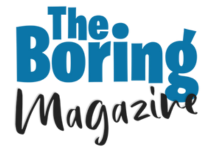In today’s digital-first workplace, where distractions are just a click away and remote work is the norm rather than the exception, maintaining productivity has become both a priority and a challenge for organizations. For employees juggling multiple responsibilities and digital distractions, staying focused and efficient is no small feat. That’s where time tracking software for employees enters the picture—not as a tool for micromanagement, but as a powerful ally in maximizing productivity, streamlining workflows, and fostering a culture of accountability.
This article explores how time tracking software enhances employee productivity, the benefits it offers to individuals and organizations, and best practices for implementation without disrupting trust or autonomy.
The Modern Productivity Dilemma
With hybrid work models and remote teams becoming standard, the traditional 9-to-5 office paradigm has shifted dramatically. While flexibility is a major win, it comes with its own set of challenges:
- Blurred work-life boundaries
- Increased digital distractions
- Lack of visibility into daily operations
- Difficulty measuring output over hours worked
Employees are often unsure how much time they spend on specific tasks, while employers struggle to understand performance metrics without overstepping boundaries. In this context, time tracking software emerges as a solution that offers clarity, structure, and strategic insights for both parties.
What Is Time Tracking Software?
Time tracking software is a digital tool that records the amount of time an employee spends on various tasks or projects. It often includes features such as:
- Start/stop timers
- Automatic idle detection
- App and URL monitoring
- Project/task categorization
- Reports and analytics
- Screenshots or activity levels (in some tools)
These platforms can be tailored for individual freelancers, teams, or entire organizations depending on needs and scale.
Popular tools include Monitask, Toggl Track, Clockify, RescueTime, and Time Doctor—each offering unique features to help employees and managers visualize how time is allocated throughout the workday.
Benefits of Time Tracking Software for Employees
Contrary to the belief that time tracking is only for employers, employees themselves stand to gain immensely from these tools. Here’s how:
1. Enhanced Focus and Reduced Procrastination
When you know your time is being tracked—even by yourself—you’re more likely to stay focused. Just like how a fitness tracker motivates you to walk more, time tracking software nudges employees to stay on task.
Tools like Monitask provide real-time feedback and productivity scores that help individuals self-monitor. This conscious awareness combats procrastination, encourages single-tasking, and keeps distractions in check.
2. Improved Time Management
By seeing exactly how much time is spent on emails, meetings, or specific tasks, employees can pinpoint inefficiencies in their routines. Over time, patterns emerge, helping users:
- Optimize workflows
- Minimize time-wasters
- Prioritize high-value tasks
- Allocate breaks more effectively
For example, an employee might discover that morning hours are their most productive period. With that knowledge, they can schedule their most demanding work earlier in the day.
3. Reduced Burnout Through Better Workload Balance
Burnout often stems from invisible overwork. Time tracking tools bring visibility to workloads, helping employees identify when they’re overcommitting or not taking enough breaks. Tools with automatic break reminders or idle detection can prompt much-needed pauses.
Some platforms also show daily or weekly time summaries, helping employees maintain a sustainable pace by adjusting their effort across days and tasks.
4. Accurate Billing and Payroll (Especially for Freelancers)
For contractors or freelancers, accurate time logs are crucial for billing clients. Time tracking software simplifies this process with:
- Task-based timers
- Hourly rate settings
- Exportable timesheets
- Invoice integration
No more estimating or undercharging—employees can confidently charge for the exact time worked.
5. Self-Accountability and Motivation
Time tracking provides a sense of ownership. When employees can visualize their accomplishments—especially in long-term or ambiguous projects—they’re more motivated to continue.
Additionally, weekly productivity reports act as mini-performance reviews, helping individuals celebrate wins and course-correct when necessary.
How Time Tracking Supports Team Efficiency
Time tracking is not just a solo tool—it amplifies team collaboration, accountability, and strategic planning. Here’s how it contributes to a more productive workplace overall:
1. Transparent Workflows and Project Management
With team-wide tracking, managers get insights into:
- Task progress
- Time allocation across projects
- Bottlenecks and blockers
This transparency allows for better decision-making, resource planning, and equitable task distribution.
2. Data-Driven Performance Reviews
Instead of relying on gut feelings or biased observations, time tracking software offers objective performance data. Managers can evaluate:
- Productivity trends
- Task efficiency
- Workload distribution
This fosters fairer appraisals and creates a merit-based culture that rewards effort and efficiency.
3. Improved Client Reporting and Budget Control
For agencies or project-based companies, knowing exactly how much time was spent on each client or campaign helps:
- Justify budgets
- Prevent scope creep
- Increase billing accuracy
With tools like Monitask, users can generate client-specific reports with just a few clicks.
4. Seamless Remote Team Coordination
In distributed teams, tracking tools act as a virtual office dashboard, showing who’s working on what, when, and for how long. This visibility reduces the need for constant check-ins and lets managers support asynchronous productivity.
Key Features That Drive Productivity
When choosing a time tracking platform, it’s important to select features that genuinely support productivity, not just surveillance. Look for:
- Real-time dashboards: Provide immediate feedback and visibility
- Automatic tracking: Reduces manual logging and errors
- Distraction alerts: Flag time spent on non-work apps or websites
- Goal setting: Helps users track time against daily or weekly goals
- Integration with task managers: Syncs with tools like Asana, Trello, or Jira
More advanced tools like Monitask also offer AI-driven productivity analysis, giving employees and managers deeper insights into patterns and habits.
Ideal Practices for Introducing Time Tracking Software
Adopting time tracking software in your organization—or even for personal use—requires thoughtful implementation. Here are some key tips:
1. Lead With Benefits, Not Surveillance
Employees often worry that time tracking equals micromanagement. To overcome this:
- Emphasize the benefits to employees
- Offer autonomy over how they use the tool
- Ensure transparency around what data is collected and why
2. Use It as a Coaching Tool, Not a Weapon
Don’t punish employees for unproductive days. Instead, use time data to support:
- Better workload balancing
- Identifying skill gaps
- Creating realistic timelines
3. Customize Settings to Match Your Culture
Some companies may need detailed activity logs; others may only want broad time categories. Adjust features like screenshots, monitoring sensitivity, or idle time detection based on your team’s needs and values.
4. Involve Employees in the Selection Process
Let teams test and vote on their preferred tools. This increases buy-in and ensures that the software actually aligns with how your team works.
Addressing Common Concerns
Q: Doesn’t time tracking add pressure to employees?
Yes—if implemented poorly. But when used transparently and ethically, it builds trust and enables self-improvement. It’s not about policing but empowering.
Q: What about creative or strategic roles where output is hard to quantify?
Time tracking isn’t about judging the value of work by the minute, but about understanding where time goes. Even creative professionals benefit from time awareness, especially when juggling multiple projects.
Q: Will this replace performance reviews or human judgment?
No—it’s a supplement. Time data should inform, not replace, human conversations about performance, goals, and development.
Real-Life Example: How Monitask Boosted a Remote Team’s Productivity
Let’s take a look at how Monitask, a popular time tracking tool, helped a digital marketing agency improve efficiency.
The Problem:
- Remote employees were struggling with focus.
- Managers lacked visibility into task progress.
- Deadlines were often missed, despite long working hours.
The Solution:
- The team adopted Monitask with basic features enabled: timers, app usage logs, and project tracking.
- Weekly reviews were conducted using time reports, with an emphasis on coaching over punishment.
- Employees began optimizing their routines by reviewing their own data.
The Results:
- Task completion rates increased by 28% in 3 months.
- Meeting deadlines improved from 67% to 91%.
- Employee satisfaction scores also rose, as the team felt more in control of their time and less overwhelmed.
The Future of Time Tracking
Time tracking is evolving beyond timers and logs. The next wave includes:
- AI-powered insights into productivity trends
- Predictive analytics for task planning
- Integration with wellness tools to promote mental health
- Gamification elements to boost engagement
Instead of just tracking hours, the future is about understanding and optimizing human energy, attention, and output.
Final Thoughts
Time tracking software is more than a digital stopwatch—it’s a mirror that reflects how we work, where we excel, and where we need to improve. When used mindfully and respectfully, it transforms the workday from a chaotic sprint into a strategic endeavor.
For employees, it means clarity, control, and confidence. For employers, it means insight, alignment, and measurable outcomes. In a world where time is one of our most precious resources, learning to manage it wisely is not just smart—it’s essential.
Looking to implement time tracking in your organization? Start small, stay transparent, and choose a tool that supports—not stifles—your team. You’ll be amazed at how a little awareness can unlock a lot of productivity.


